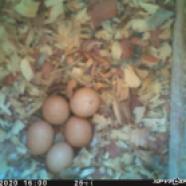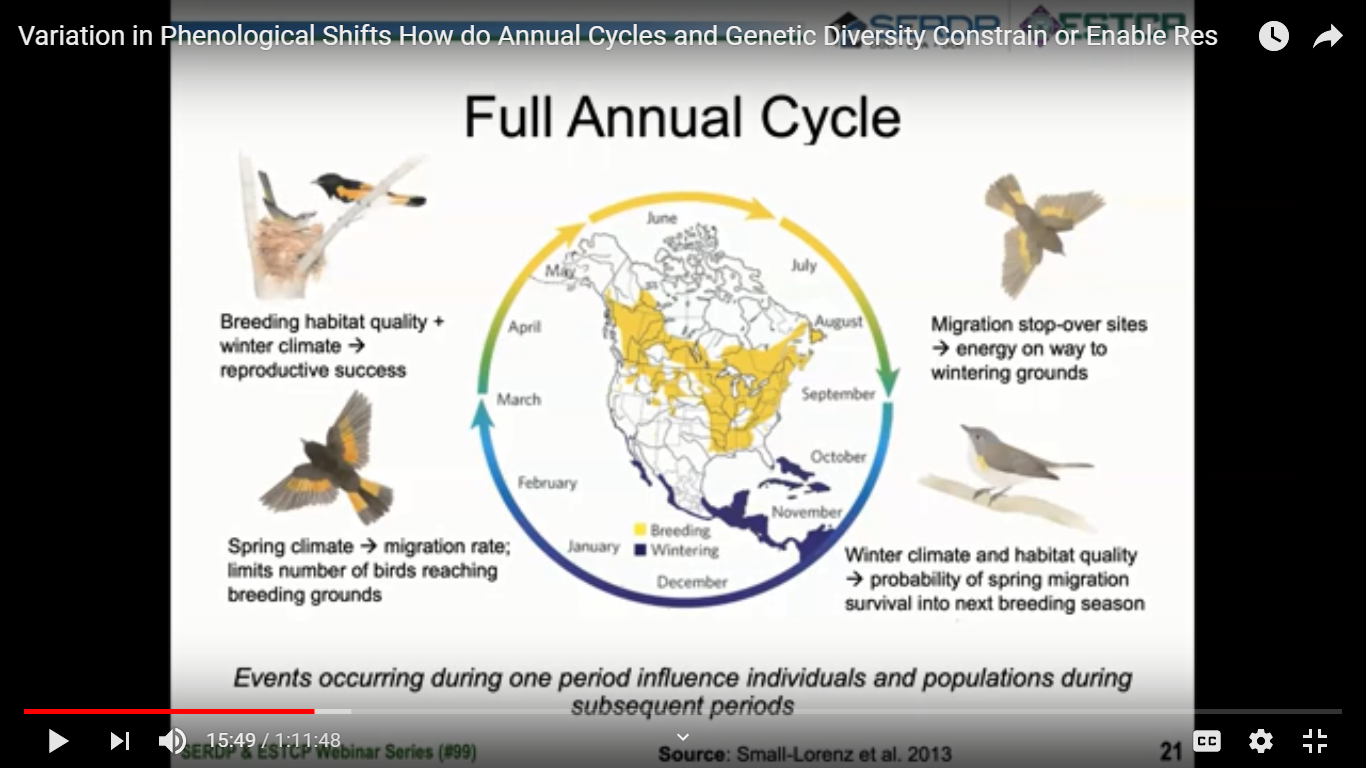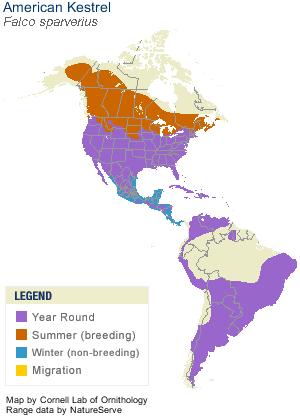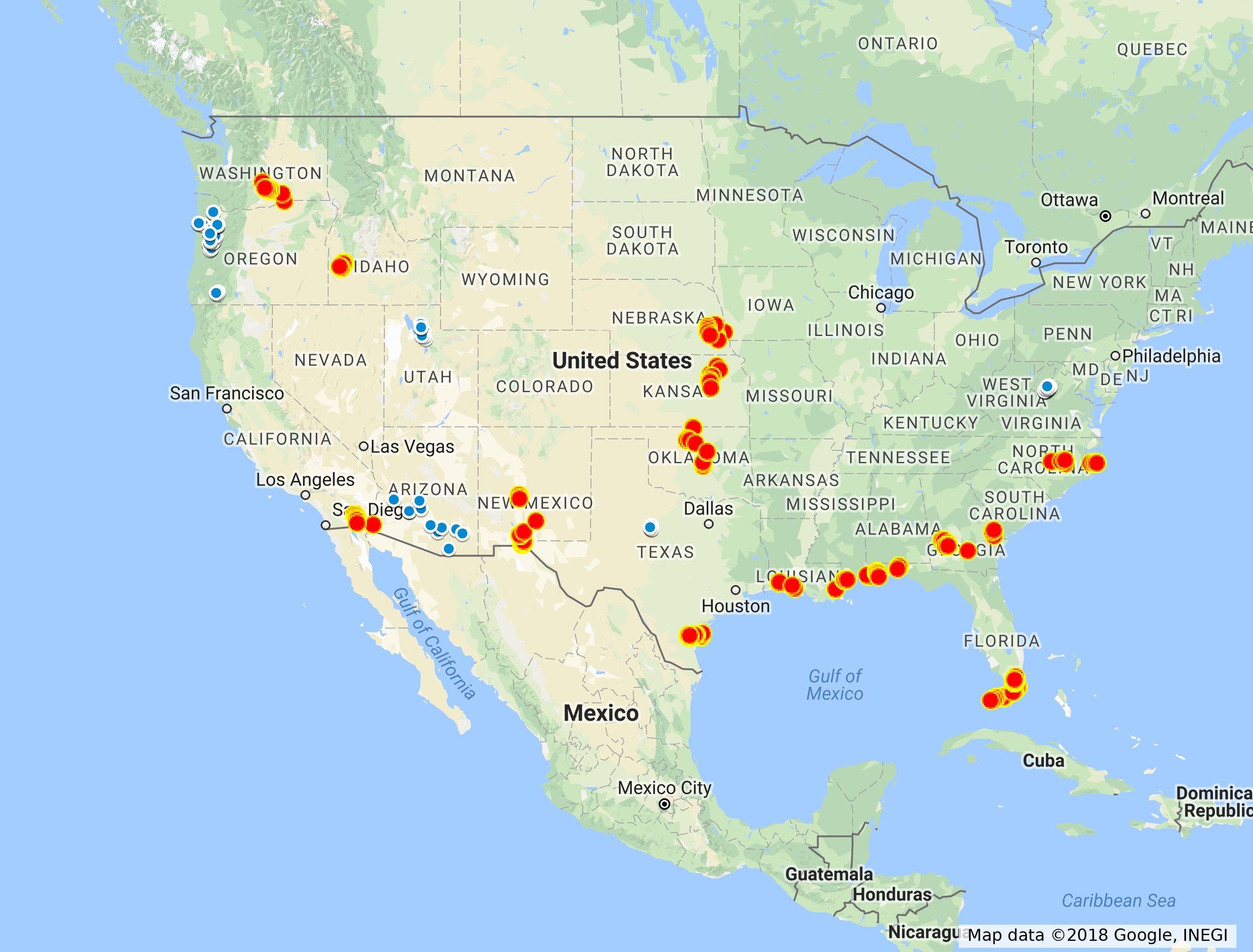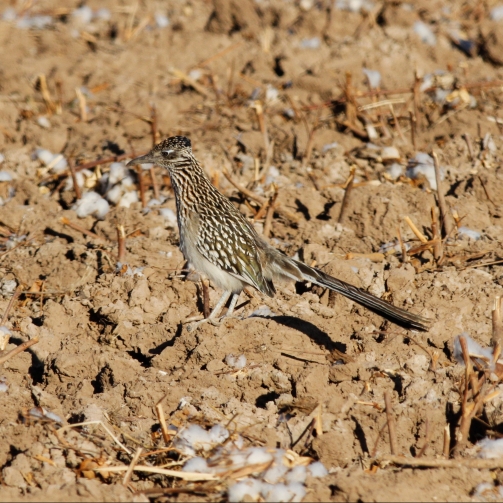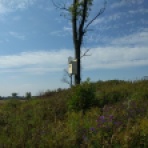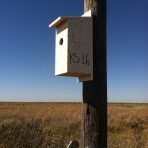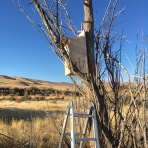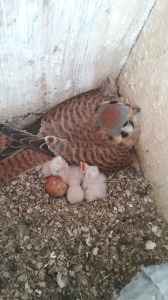It’s not only Alice in Wonderland’s White Rabbit that faces dire consequences for being late. Animals that fail to synchronize the most taxing part of the breeding season (i.e. raising young) with peak food availability can become “mismatched” with their food sources, meaning there might not be enough food for themselves and their offspring. With climate change causing earlier vegetation green-up (one of the first signs of spring) in many regions, animals that don’t keep up by breeding earlier are increasingly at risk of mismatch.



Spring flowers in bloom (left), mouse hiding in a nestbox (top right), female American kestrel flying (bottom right)
American kestrels are widespread, generalist predators that breed across much of North America. Although populations in the West are responding to earlier springs by nesting earlier, populations in the East do not seem to be shifting nesting timing. These regional differences, along with widespread population declines (particularly in eastern populations), makes the American kestrel a prime candidate to study the effects of climate-driven mismatch. We set out to uncover the consequences of mismatch on survival and reproduction of American kestrels to gain insights into whether and how this species will adapt to changing climate.

Remote trail camera photos from inside nestboxes. From left to right: female and male kestrel roosting overnight, male kestrel incubating, female kestrel incubating, four kestrel eggs, male and female kestrel with newly hatched nestlings, newly hatched nestling with 3 unhatched eggs, four young nestlings, at least three female nestlings near fledging age
If mismatch is affecting kestrel reproduction, we might expect to see that mismatched nests will fail completely (i.e. produce no offspring) or will produce fewer offspring. To investigate this, we used nesting data collected by professional and community scientists from >2000 nests across the American kestrel breeding range in the United States and Canada (sources: Cornell Lab of Ornithology’s NestWatch, The Peregrine Fund’s American Kestrel Partnership, Southwestern Idaho Kestrel Study, Full Cycle Phenology Project on Department of Defense installations). We measured mismatch by calculating the difference in days between the date of “start of spring” at the nest location (based on temperature and first bloom dates) and the date the first egg was laid. Our results showed that “late” nests (i.e. eggs laid after the start of spring) were more likely to fail, and those that didn’t fail produced fewer offspring compared to “early” nests (i.e. eggs laid before the start of spring). Effects of late nesting were particularly severe for kestrels nesting in the Northeast compared to other regions, with early nesters producing a high number of offspring and that number dropping sharply the later they nested. (see the full paper here)

Visual representations of above results:
The top panel represents a highly seasonal environment (peaked green resource curve) where American kestrels that lay eggs early (shown in orange) overlap with food peaks resulting in a very high number of offspring and those that lay eggs late (shown in purple) miss the food peak resulting in a very low number of offspring.
The bottom panel represents a less seasonal environment (low, even green resource curve) where American kestrels that lay eggs early (orange) overlap more with food peaks resulting in more offspring compared to those that lay eggs late (purple) and overlap less with food peaks, but the difference is less pronounced that in more seasonal environments.
Raising young takes a lot of energy and resources, and parents who raise young in mismatched conditions when food is limited may be less likely to survive than parents who nest on time. To investigate this, we needed in-depth information about the year-to-year survival of kestrels, so we used data from two intensive long-term nestbox monitoring sites in western (Idaho-Julie Heath & Karen Steenhof, Boise State University) and eastern (New Jersey-John Smallwood & Emilie Snyder, Montclair State University) North America. At these sites, researchers attached leg bands with unique identifying numbers to each kestrel, to determine who was surviving and breeding successfully year-to-year. Our results showed interesting differences between the western and eastern populations. In the West, kestrels that nested early were more likely to survive than later nesters, but in the East, the opposite was true, kestrels that nested later were more likely to survive than earlier nesters. (see the full paper here)


Male American kestrel with identifying leg band (left), female American kestrel feeding nestlings (right)
Interestingly, kestrels that lay eggs too late may engage in behavior to compensate for their mistiming. Using remote trail cameras in a subset of nestboxes on Department of Defense sites, we found that for kestrel pairs that nested later, males began incubation sooner after eggs were laid than males from pairs that nested earlier. This early incubation resulted in eggs hatching sooner (i.e. making them less mismatched with food peaks) and resulted in hatch asynchrony (i.e. offspring hatching on staggered days). Having offspring that reach their peak growth rate at different times lessens the per diem energy burden on parents, which may help them survive and raise young successfully even when mismatched with food peaks.

Visual representations of above results:
The top panel (orange) represents early nesting kestrels where males begin incubation once all eggs have been laid, resulting in offspring hatching at the same time (i.e. all the same age).
The bottom panel (purple) represents late nesting kestrels where males begin incubation before all eggs have been laid, resulting in offspring hatching on different days (i.e. different ages)
In sum, we demonstrate that American kestrels are vulnerable to consequences of mismatch and that this vulnerability varies across their breeding range. In the West, nesting earlier seems to provide benefits for both survival and reproduction, which may explain why western populations are nesting earlier in response to earlier springs. Whereas in the East, a trade-off between the survival costs for parents versus the reproductive benefits of nesting early may explain why nesting timing remains unchanged. Although we don’t know what the root cause of these regional differences is, it may be related to the length of nesting windows or other climate-driven changes in weather patterns. In the West, the growing season is long, and as climate change drives warmer winters and earlier springs, constraints on early nesting are being removed, widening the window of time kestrels can nest. In the East, the growing season is shorter and more peaked, and climate change is resulting in more extreme early season weather which may constrict the window of time kestrels can nest safely. Although the early onset of incubation may be an adaptive behavior to deal with nesting too late, it is unknown how effective this will be in offsetting consequences of mismatch.
This research is supported by the U.S. Department of Defense, through the Strategic Environmental Research and Development Program (SERDP RC-2702).
Thank you to our collaborators and coauthors, our amazing field team, and the countless community scientists who contributed data. Special thanks to the DoD biologists and volunteers across 12 DoD sites who installed and monitored nest boxes and cameras, and provided invaluable on-the-ground help with logistics, camera troubleshooting, and much more.
Post by-Anjolene Hunt
Read the full scientific publications this blog was based on here:
Callery, K. R., Schulwitz, S. E., Hunt, A. R., Winiarski, J. M., McClure, C. J., Fischer, R. A., & Heath, J. A. (2022). Phenology effects on productivity and hatching-asynchrony of American kestrels (Falco sparverius) across a continent. Global Ecology and Conservation, 36, e02124.













